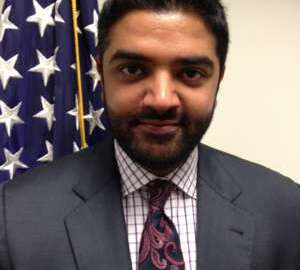
USDS: Successful IT modernization projects depend on testing early, often
Creation of the Electronic Immigration System (ELIS) and visible upgrades to the trusted traveler's program show DHS' dedication to IT modernization.
Modernizing a federal agency’s technology requires input from many voices in different fields. The U.S. Digital Service (USDS) works to recruit the country’s top technology talent to improve how the government operates in the digital era.
USDS offices — such as the one within the Homeland Security Department — have done so by deploying teams to help different federal agencies tackle their most critical challenges when it comes to IT modernization. The teams are made up of people from the fields of engineering, design, product management, procurement and other government partners and contractors.
The employees serve temporary tours of service ranging from three months to four years. The projects are focused mainly on bringing expertise from the field to the agencies and promoting certain modernization efforts.
“We actually have four core objectives,” Stephanie Neill, executive director of the DHS digital services team, said on Federal Insights: IT Modernization. “On the one hand we are here to transform the department’s most critical services … but on the other hand … to bring best technical practices into public service and hopefully effect some culture change.”
Teams also help incubate a common form of infrastructure for those digital services. This helps the agency and the digital teams have better hardware and tools in order to continue executing their mission.
The fourth objective is to teach the agencies how to rethink the way they buy their digital services, such as cloud storage, agile and DevOps hardware, etc.
“We do have one initiative that we call Project Trio,” Neill told Federal News Radio’s Jason Miller on Federal Drive with Tom Temin. “Which is actually bringing MacBooks into rotation within DHS so that software engineers and designers can get access to tools they need that they can’t currently access with government furnished equipment.”
Immigration project
Since the agency’s founding in September 2015, their teams have worked with the U.S. Citizenship and Immigration Services, Customs and Border Protection, Federal Emergency Management Agency, Transportation Security Agency, and with partners at the White House, Health and Human Services, and the State and Defense Departments.
A digital partnership between DHS and USCIS pushed the Electronic Immigration System (ELIS) project forward. The two agencies had been engaged in the system’s development even before USDS was created. ELIS is a project designed to help the agencies examine and process immigration applications digitally and also more quickly.
Neill said around 33 percent of the immigration applications submitted in February 2018 were filed online through this system. And since the establishment of naturalization by the Obama administration in 2014, 10 percent have been filed through ELIS.
“Prior to that, all of the naturalization cases were being processed in a system called Claims 4. It’s sort of a partial data capture, hybrid paper-digital system. So we were still shipping around loads of paper,” she said. “With this move to ELIS, now about 50 percent of the agency’s overall workload will be processed online, which is reducing drastically the amount of paper that needs to be shipped from office to office.”
The team started by focusing on each step, or benefit, within the immigration process. They began with moving the I-90, or Green Card renewal applications, online. Neill said this makes up about 250,000 applications a year. They have been able to launch improvements within the system in 2018 to allow a little less than half to be batch processed, saving time and resources.
“Basically [that] means computers are doing computer things and running all the checks that really shouldn’t need a human’s eyes on it,” Neill said. “It’s basically putting the applications that actually require human touch on a different track, which is a significantly smaller portion.”
Modernizing the way I-90 forms are processed was simple though, because they are forms representing applicants who have already earned their Green Card. The process of becoming a legal resident is a little more tricky.
Neill said the next step in the program will be more complex.
“This all needs to translate smoothly into the digital world, which is going to be a big challenge,” she said. “But one I think the transformation team is up to.”
Bottom line
One secret to the rapid development of successful IT modernization projects for the agency has been the adoption of prototypes early in the process. Neill said putting heavy emphasis on user research and usability testing from the beginning, even before coding, has shown a positive return.
It’s all about making sure they get it right and get it tested as early and as often as possible.
“We’ve been really trying to drive home with the program the importance of design [and] explaining that design isn’t just pixel pushing,” she said. “It’s not even just about solving problems, but making sure you’re solving the right problem.”
DHS and USDS have used the same thinking on other projects as well, including upgrades to CBP’s trusted travelers program.
In October 2017, CBP launched an online application for the agency’s Global Entry, NEXUS, Sentri and FAST programs. Originally, the four programs were separate and made the workload twice as hard.
“It was the first major application that CBP moved to the cloud. We wanted to make sure it was done correctly and there weren’t any security vulnerabilities or other major defects,” Neill said. “I think the culture change aspect was probably our biggest challenge here. So, creating a culture around testing, testing while you’re building and writing unit tests and that sort of thing was definitely a learning curve.”
Neill said CBP and USCIS were both optimistic from the beginning of the projects.
Copyright © 2025 Federal News Network. All rights reserved. This website is not intended for users located within the European Economic Area.
Steff Thomas is a digital editor at Federal News Network.
Related Stories





